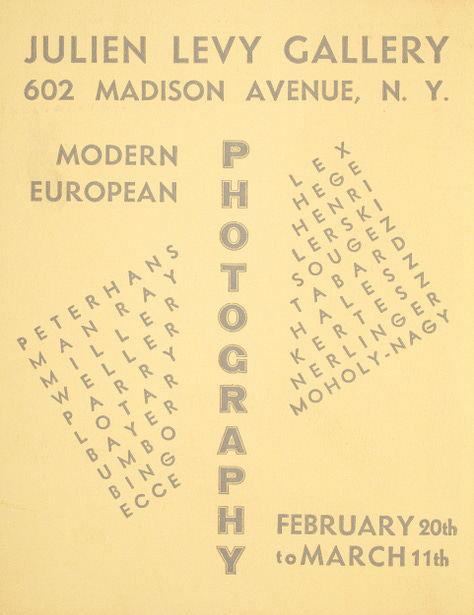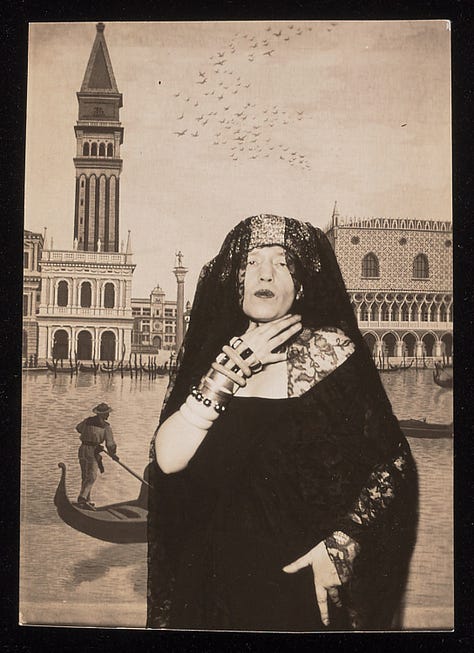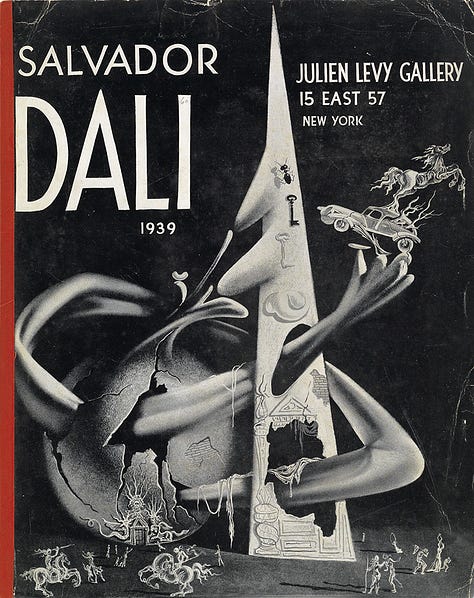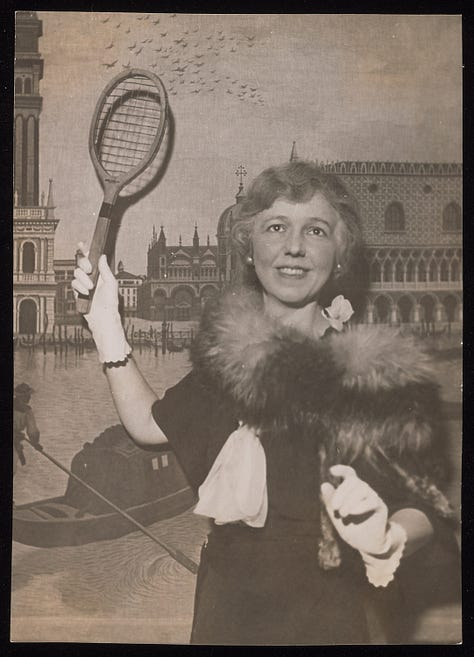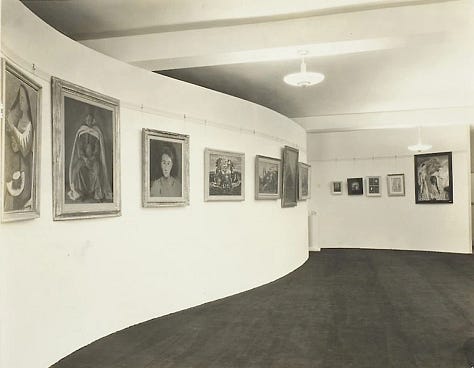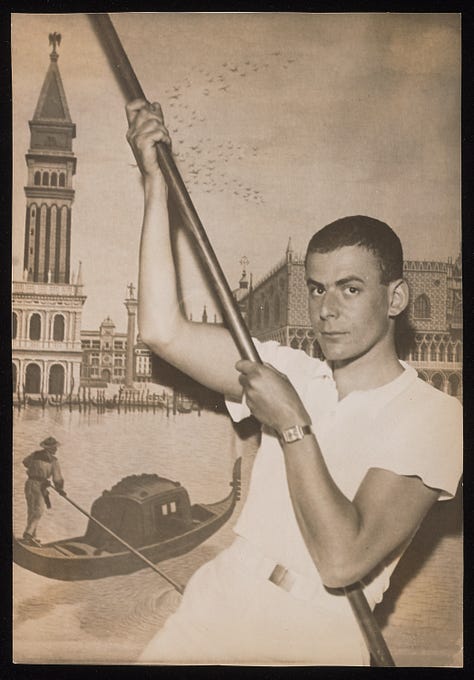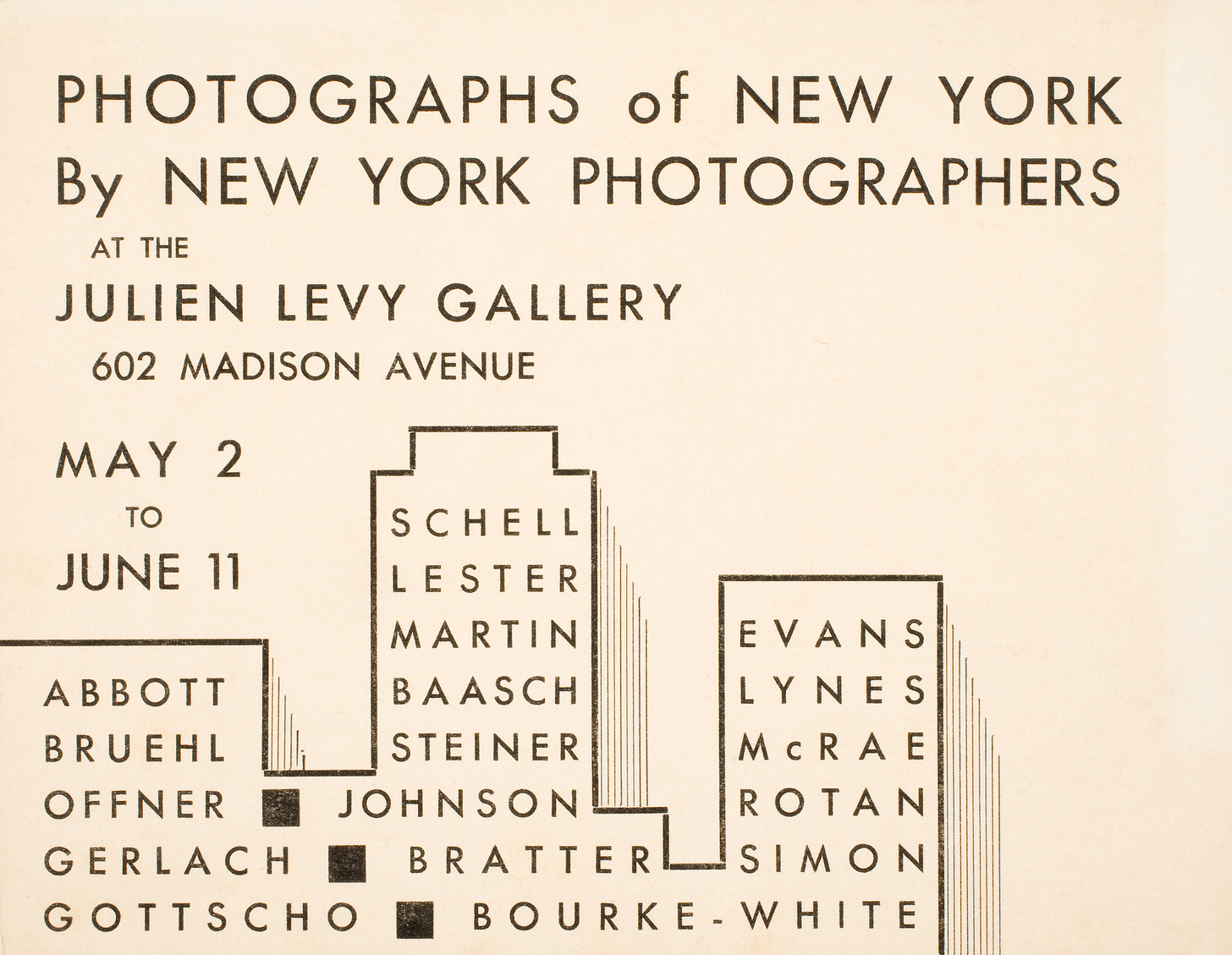Max Ewing's Queer Carnival & Frida Kahlo's U.S. Debut
The Julien Levy Gallery in NYC was an early champion of LGBTQ artists
For nearly a century, New York City has been home to countless influential art galleries known for introducing and pushing forth new art movements and media as well as for establishing the careers of many now-globally celebrated artists. Perhaps one of the earliest galleries to make such an impact in the City was the Julien Levy Gallery, which first opened in 1931 at 602 Madison Avenue between East 57th and 58th Streets and which was an early proponent of and important venue for Surrealism, avant-garde art, experimental film, and American photography. Throughout the 1930s and ‘40s, the Gallery became a major destination for these particular types of innovative artists and their patrons, but also became a notable early venue that promoted the work of several LGBTQ artists including Frida Kahlo, who had her first ever exhibition on American soil there in November of 1938.
The Julien Levy Gallery was owned and operated by Julien Levy, who was born in New York on January 22nd, 1906. After studying museum administration at Harvard under Paul J. Sachs, Levy dropped out shortly before graduating and moved back to New York, where he met the conceptual artist Marcel Duchamp shortly thereafter. In 1926, Levy traveled to Paris with Duchamp, where he befriended both the artist Man Ray as well as the photographer Berenice Abbott, who publicly identified as a lesbian. Through Abbott, Levy came into possession of a significant portion of the documentary photographer Eugène Atget’s personal archive. One year later, and still living in Paris, Levy met the artist and writer Mina Loy and married her daughter, Joella Haweis.
Levy soon brought Haweis back to New York, where he briefly worked at the Weyhe Gallery before opening his own gallery—named after himself—in 1931. Upon opening, the Levy Gallery was one of only a few art galleries in existence in Manhattan at the time. It debuted with a photography exhibition that included works by Alfred Stieglitz, and early on continued to focus on photography, staging Man Ray’s first major show and introducing French humanist photographer Henri Cartier-Bresson to the United States. Levy quickly discovered, however, that photography was hard to sell and shifted the gallery's focus to also highlight and promote Surrealist art, showing the work of artists like Pablo Picasso, Salvador Dalí, Max Ernst, Leon Kelly and Joseph Cornell.
In addition to promoting Berenice Abbott’s photography despite her sexuality, Julien Levy and his Gallery had no issue showcasing the work of numerous other prominent LGBTQ photographers and artists at the time, including the likes of George Platt Lynes, Laura Gilpin and Max Ewing, among others. Perhaps most notably, in 1933 the Levy Gallery held Ewing's overtly homoerotic exhibit,"The Carnival Of Venice", a collection of photographs of Ewing's friends—artists, athletes and actors—set against a fake backdrop of Venice. The photos were, in fact, all taken in Ewing’s apartment, and feature many LGBTQ subjects, including both Abbott and Lynes as well as Paul Robeson and Lincoln Kirstein. In 1934, the Gallery also held an exhibit of 50 photos taken by Lynes himself, who in his own lifetime would amass a substantial body of work comprised of nude and homoerotic photography.
Perhaps one of the most famous queers to debut at the Julien Levy Gallery was none other than Frida Kahlo herself, to whom Levy gave her first solo exhibition in America in 1938 (the Gallery had also moved to 15 East 57th Street one year prior). The exhibition at the time caused quite a stir within the art world, with Time magazine writing: “The flutter of the week in Manhattan was caused by the first exhibition of paintings by famed muralist Diego Rivera’s wife…Frida Kahlo.” Though her first venture in New York’s art scene was slightly eclipsed by her still being referred to as Rivera’s wife, the debut exhibition at Levy Gallery was still a notable turning point in helping launch Kahlo’s career as an artist in her own right. Inarguably, Frida Kahlo as an artist would ultimately come to eclipse her husband.
Levy and Kahlo were, in actuality, quite close and were even rumored to be lovers. In 1937, Levy took a series of intimate photos of Kahlo, which show the brazen artist sometimes topless, sometimes with her hair down, and sometimes seemingly unaware of the camera at all. The photos can seem voyeuristic at times, but capture Kahlo at a watershed moment, right before she would achieve international fame.
In 1942, Levy and Haweis would divorce (did Frida have anything to do with it?) and one year later, Levy would move the gallery again, this time just a few doors down to 42 East 57th Street. One year after that, Levey would remarry, this time to Surrealist artist Muriel Streeter, whose own work would be heavily influenced by spending time in and around the Levy Gallery. In 1949, Levy would ultimately close his highly influential Gallery and move to Connecticut. After that, he would divorce and remarry once more, this time to Jean Farley McLaughlin, teach at Sarah Lawrence College and SUNY Purchase, and publish several books including Memoir of an Art Gallery and Surrealism. After a significant amount of time, Levy would pass away on February 10th, 1981, but should nevertheless be remembered as an impassioned champion of Surrealism, experimental film, and photography, as an early advocate of LGBTQ creatives, and as one of the most influential art dealers of the early twentieth century.
Surrealist painter Dorothea Tanning perhaps described Levy best, saying that his persona “was a magnet for adjectives. They [artists] swarmed around him, clung to his profile (lovely to draw), hair (shiny and black), silhouette (slim, gracile), the ensemble elegant, suave, debonair, elusive, without any of them, or even all of them together, pinning him down."

